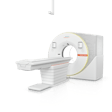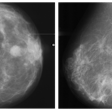Sunday, November 27 | 10:30 a.m.-11:30 a.m. | S2-SSPH02-3 | N229
In this physics session on new imaging techniques, researchers will discuss developing a device with a liquid filter that can be quickly drained when flat-panel detectors (FPDs) are used for nonspectral imaging. The device could improve radiation safety and clinical adoption of these detectors, the researchers suggest.FPDs with two separate scintillator layers enable spectral 2D and 3D x-ray imaging with perfect spatial-temporal registration, according to research presented by Emily Cai, a medical student at University of Wisconsin-Madison. Yet the presence of the FPDs permanent copper layer during nonspectral imaging creates a quantum efficiency sink that is detrimental to radiation safety.
Hence, the group built a chamber for a liquid filter made from 1/16" acrylic sheets that have negligible x-ray attenuations. The filter can be drained to an off-FPD reservoir using a pump when spectral imaging is not clinically indicated.
With the liquid filter in place, the proposed detector provides better spectral imaging performance, and when the liquid is drained, the detector provides better nonspectral imaging performance compared with existing dual-layer FPDs, according to the findings.
"This method enables routine clinical use of dual-layer FPDs for not only spectral imaging but more importantly, nonspectral applications such as routine fluoroscopy and [digital subtraction angiography] which are among the most radiation-sensitive procedures," Cai noted.




















